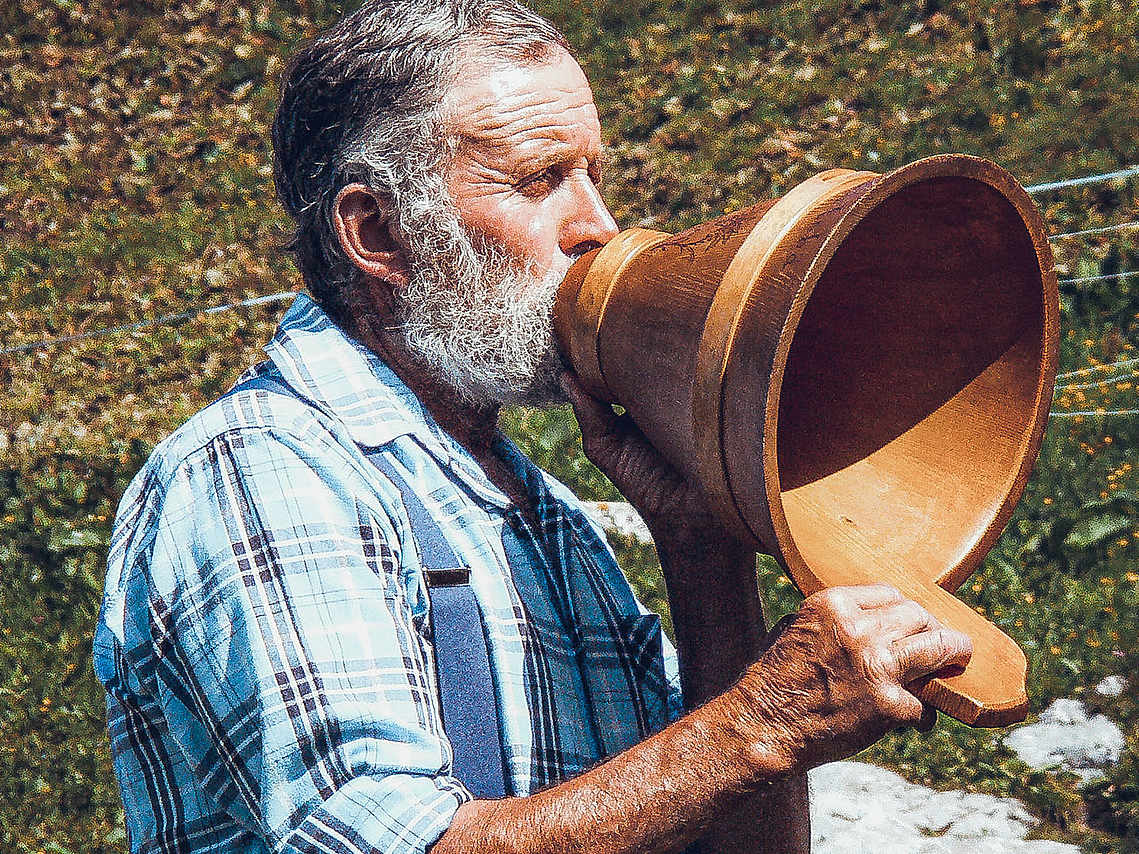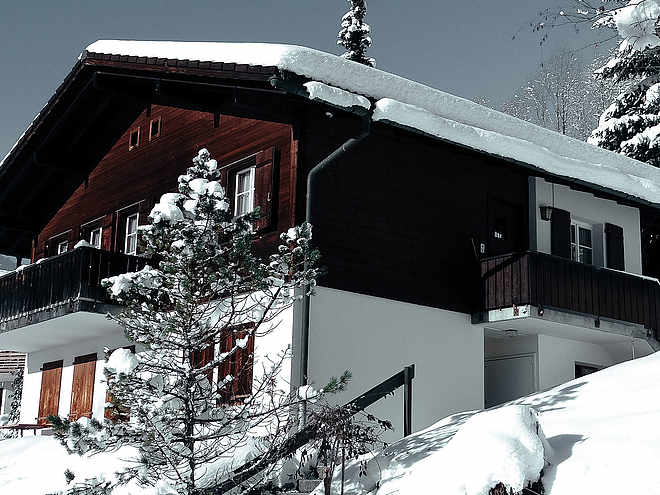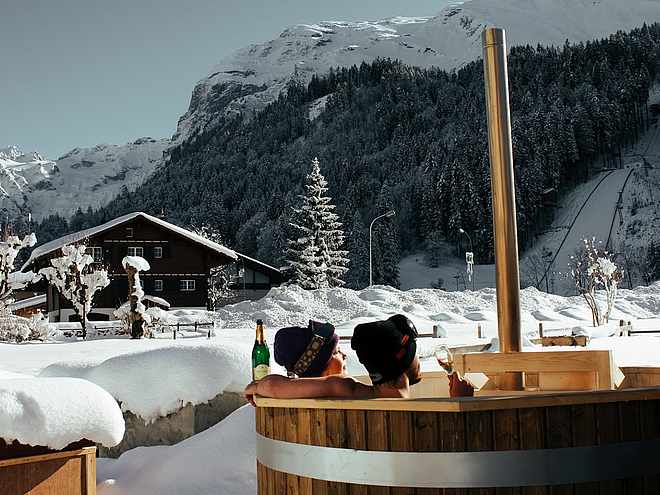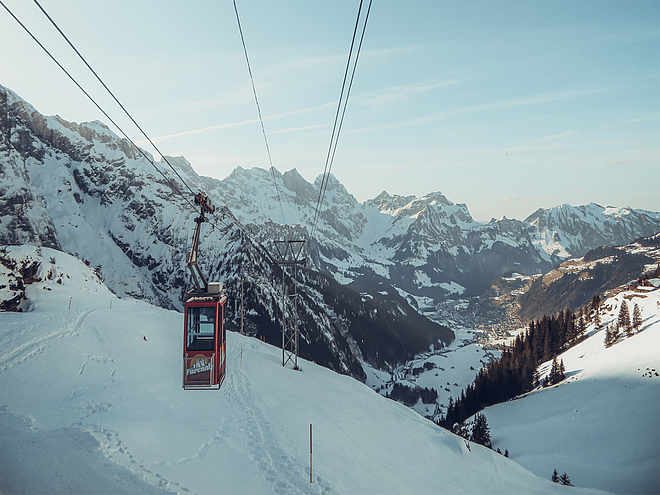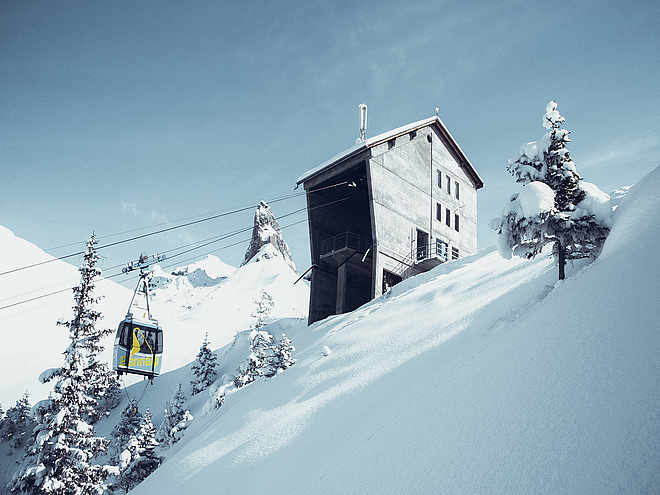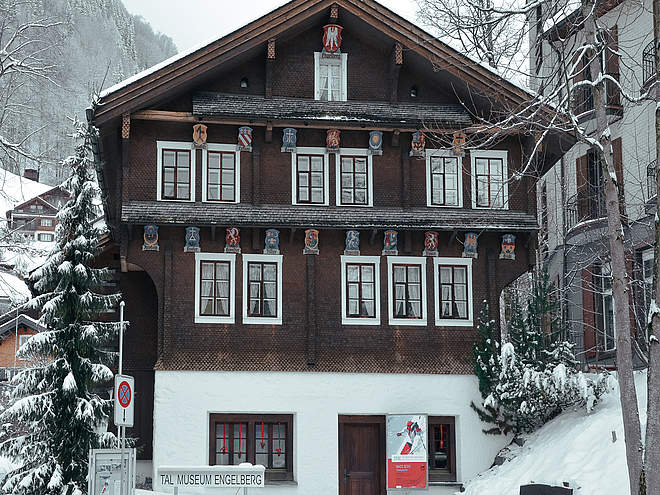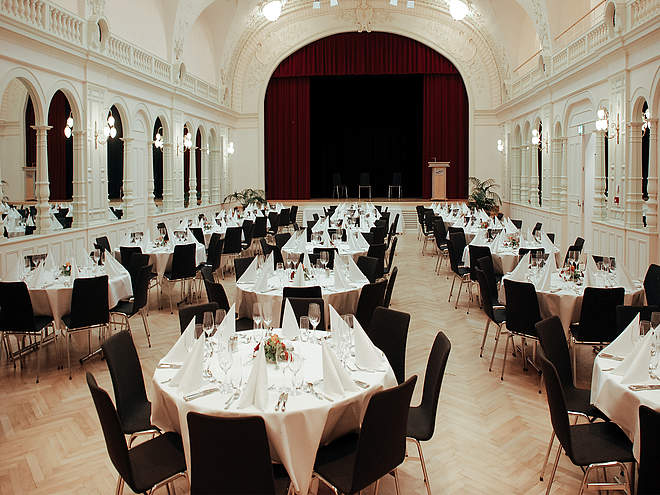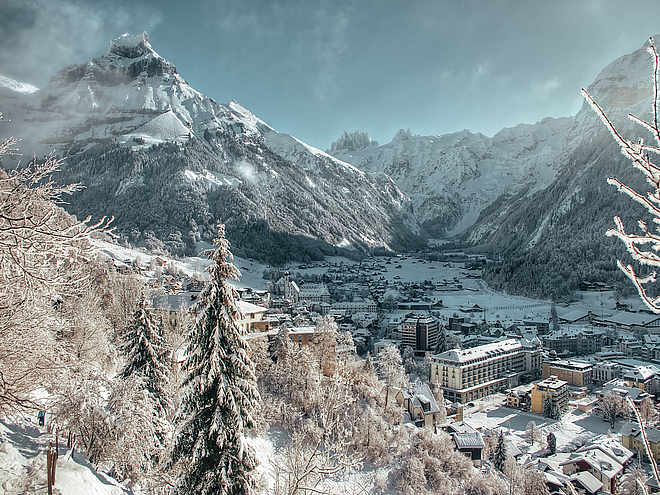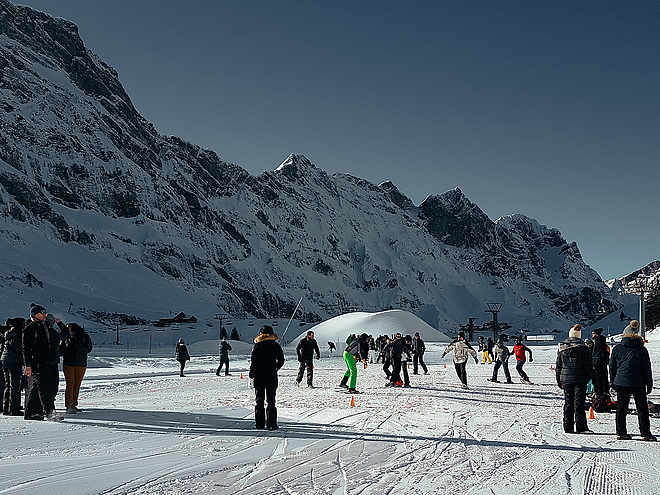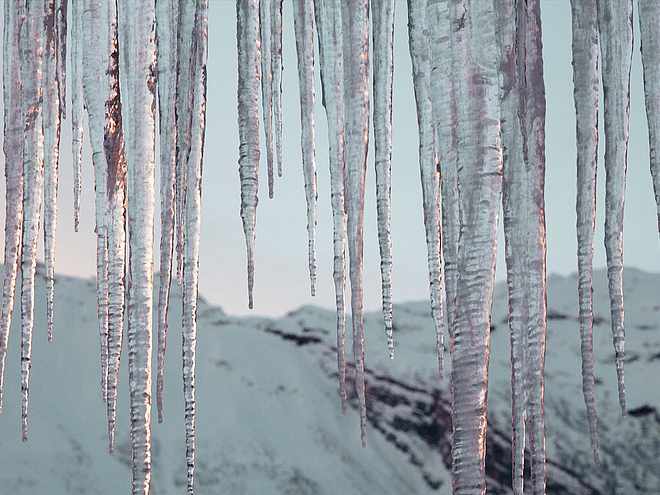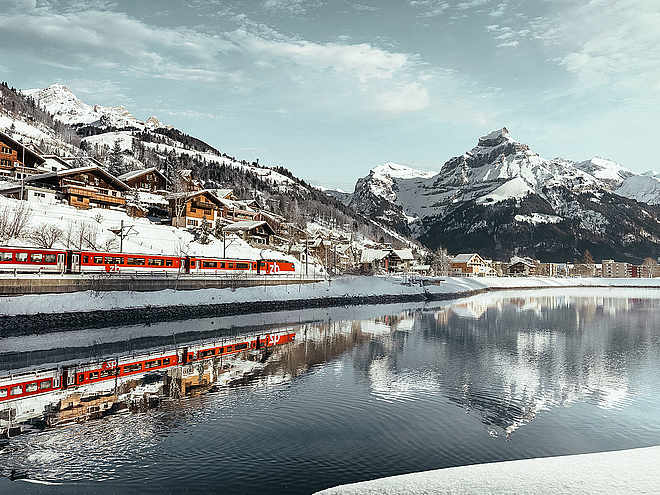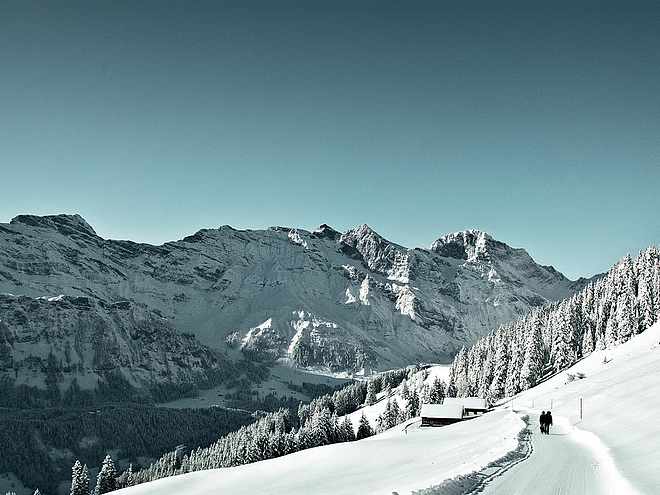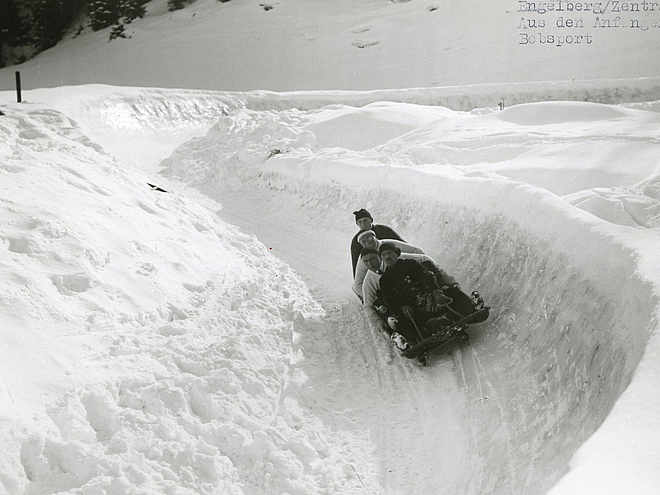With deliberate steps, alpine farmer Franz Häcki walks the path from the alpine hut to the somewhat elevated wooden cross. He carries a wooden funnel in his hand. The prayerful. His gaze wanders over the valley. The last rays of the sun cast a golden glow on the surrounding mountain peaks. The day's work on the alp is done. Time to pause for a moment. And to say thank you to the Lord God for an accident-free day and also for the fact that the cattle entrusted to the alpine farmer are healthy. Franz Häcki puts the smaller of the two openings of the wooden funnel to his lips and begins the prayer call.
The call to prayer as a form of evening prayer or blessing of the alpine pastures has a long tradition in Engelberg and is probably one of the oldest traditions still practised today. However, if you listen very carefully to the alpine farmers' call to prayer, you will notice small but very subtle differences. For example, the call to prayer recited on the Engelberg Alps differs in the choice of words and also in the invocation of the various saints from the call to prayer recited by their colleagues only a few hundred metres away as the crow flies on Trübsee. There are also variations in the key. What is characteristic for all of them, however, is the musical form of the call to prayer with a relatively rigid composition of the melody. It does not matter whether the prayer is recited on Alp Stoffelberg or on Trübsee. Each syllable of the text is rendered with one tone and at the end of the verse there is usually an embellishment with several tones on one syllable.
The evening prayer of the alpine herdsmen in the form of the call to prayer is also cultivated by the younger generation in Engelberg today. This was probably not always the case. Indeed, it almost seemed that the call to prayer could disappear from the Engelberg Alps. Probably for this reason, a far-sighted woman established a legacy for the "Alpsegenstiftung" in 1936 with the ulterior motive that the interest accruing from the legacy should be divided among the prayer callers. For Franz Häcki this did not matter. Since his earliest youth, he has been a prayer caller out of a deep inner conviction. He ends his evening prayer with a loud whoop. With the wooden funnel in his hand, he makes his way back to the alpine hut, enjoying the silence on his alp, interrupted only by the tinkling of the bells of the grazing animals, for the last time this day. And in the meantime the sun has also left the valley. Time to go to sleep too.
Author
Text & Pictures: Beat Christen

